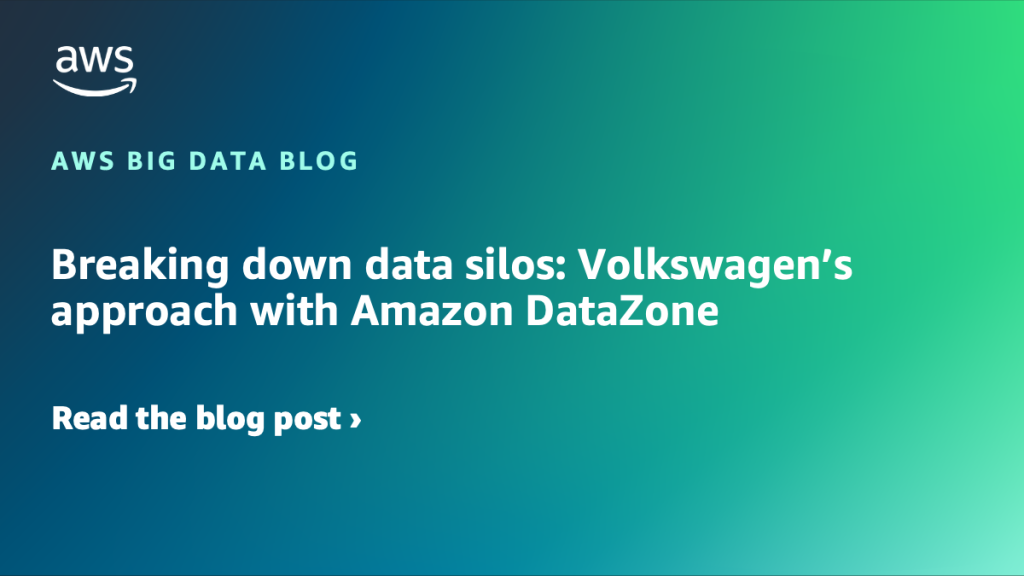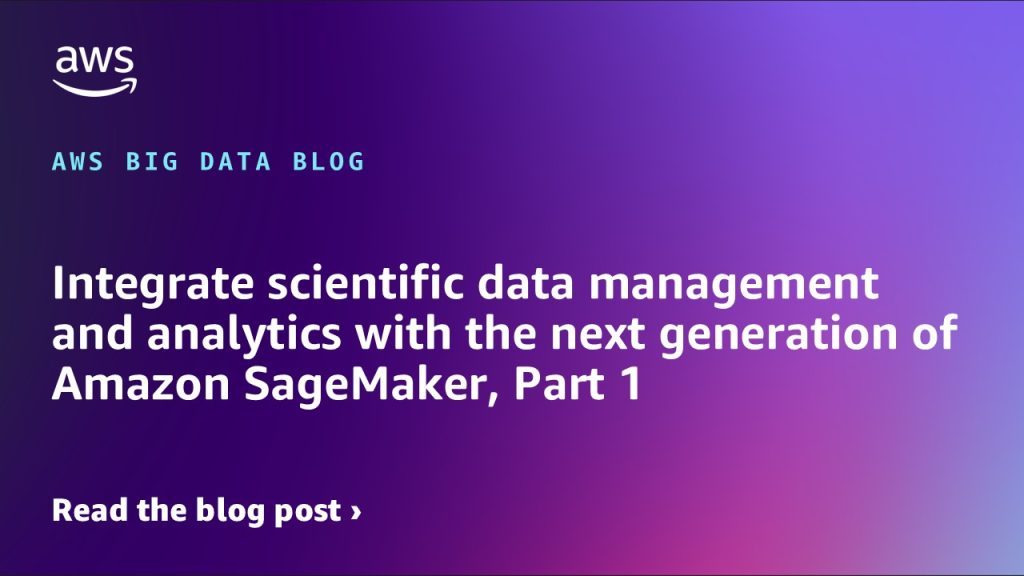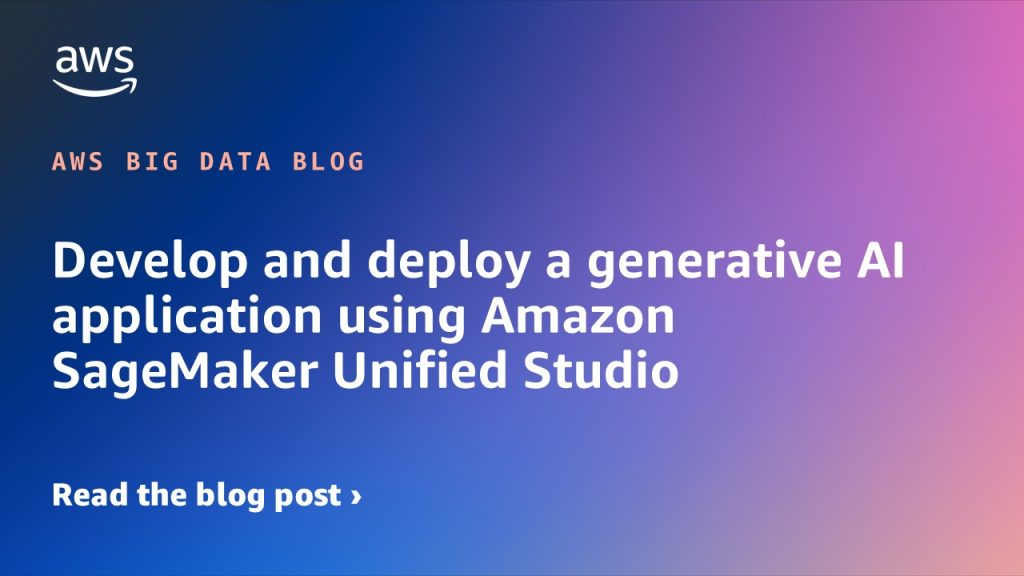AWS Big Data Blog
Category: Industries
Breaking down data silos: Volkswagen’s approach with Amazon DataZone
In this post, we introduce Amazon DataZone and explore how Volkswagen used Amazon DataZone to build their data mesh, tackle the challenges encountered, and break the data silos.
Announcing SageMaker Unified Studio Workshops for Financial Services
In this post, we’re excited to announce the release of four Amazon SageMaker Unified Studio publicly available workshops that are specific to each FSI segment: insurance, banking, capital markets, and payments. These workshops can help you learn how to deploy Amazon SageMaker Unified Studio effectively for business use cases.
Integrate scientific data management and analytics with the next generation of Amazon SageMaker, Part 1
In this blog post, AWS introduces a solution to a common challenge in scientific research – the inefficient management of fragmented scientific data. The post demonstrates how the next generation of Amazon SageMaker, through its Unified Studio and Catalog features, helps scientists streamline their workflow by integrating data management and analytics capabilities.
Develop and deploy a generative AI application using Amazon SageMaker Unified Studio
In this post, we demonstrate how to use Amazon Bedrock Flows in SageMaker Unified Studio to build a sophisticated generative AI application for financial analysis and investment decision-making.
Near real-time baggage operational insights for airlines using Amazon Kinesis Data Streams
This post explores a framework developed by IBM to modernize baggage analytics using AWS managed services like Amazon Kinesis Data Streams, DynamoDB Streams, and other AWS services within a serverless architecture. The solution enables near real-time baggage operational insights for airlines, delivering cost savings, enhanced scalability, and improved performance while providing better security and operational efficiency to meet evolving airline needs.
Powering global payout intelligence: How MassPay uses Amazon Redshift Serverless and zero-ETL to drive deeper analytics.
In this blog post we shall cover how understanding real-time payout performance, identifying customer behavior patterns across regions, and optimizing internal operations required more than traditional business intelligence and analytics tools. And how since implementing Amazon Redshift and Zero-ETL, MassPay has seen 90% reduction in data availability latency, payments data available for analytics 1.5x faster, leading to 45% reduction in time-to-insight and 37% fewer support tickets related to transaction visibility and payment inquiries.
Amazon Prime Video advances search for sports using Amazon OpenSearch Service
In this post, we will walk you through how Prime Video used Amazon OpenSearch Service and its AI and machine learning (AI/ML) capabilities to build a more intuitive and enhanced sports search experience.
Build a high-performance quant research platform with Apache Iceberg
In our previous post Backtesting index rebalancing arbitrage with Amazon EMR and Apache Iceberg, we showed how to use Apache Iceberg in the context of strategy backtesting. In this post, we focus on data management implementation options such as accessing data directly in Amazon Simple Storage Service (Amazon S3), using popular data formats like Parquet, or using open table formats like Iceberg. Our experiments are based on real-world historical full order book data, provided by our partner CryptoStruct, and compare the trade-offs between these choices, focusing on performance, cost, and quant developer productivity.
HEMA accelerates their data governance journey with Amazon DataZone
HEMA is a household Dutch retail brand name since 1926, providing daily convenience products using unique design. This post describes how HEMA used Amazon DataZone to build their data mesh and enable streamlined data access across multiple business areas. It explains HEMA’s unique journey of deploying Amazon DataZone, the key challenges they overcame, and the transformative benefits they have realized since deployment in May 2024. From establishing an enterprise-wide data inventory and improving data discoverability, to enabling decentralized data sharing and governance, Amazon DataZone has been a game changer for HEMA.
How DeNA Co., Ltd. accelerated anonymized data quality tests up to 100 times faster using Amazon Redshift Serverless and dbt
DeNA Co., Ltd. (DeNA) engages in a variety of businesses, from games and live communities to sports & the community and healthcare & medical, under our mission to delight people beyond their wildest dreams. This post introduces a case study where DeNA combined Amazon Redshift Serverless and dbt (dbt Core) to accelerate data quality tests in their business.









